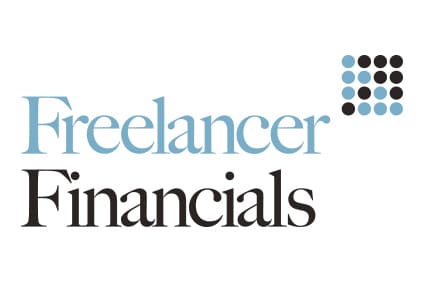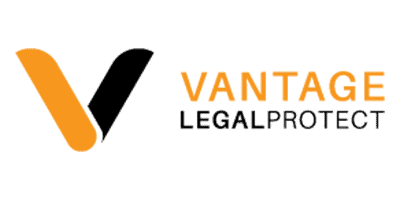OTS makes recommendations on simplifying tax for small companies
The Office of Tax Simplification (OTS) has suggested a ‘look-through’ company, whereby shareholders would be taxed directly on their share of company profits, as a way of simplifying corporation tax for small companies.
In their ‘Small company taxation review’, the OTS make a number of recommendations on how to simplify the tax system, increase certainty and reduce administrative burdens for ‘micro’ businesses (fewer than 10 employees). During the review however a lot of the OTS’s thinking was around what they term ‘nano’ companies; those with one working proprietor and either none or only one other employee.
The review does not consider IR35 but the OTS did take notice of all references to the intermediaries legislation during its consultations with small company owners, representative groups, accountants and tax experts.
What do small companies look like?
The small company owners that OTS met with consistently made it clear that the primary concern for them was the successful running of their business interests, with tax a secondary consideration. This chimes with a survey carried out by HMRC in 2014 into the reasons behind incorporation, where it was gleaned that limited liability was the main driver and not tax.
The three main reasons for forming a company did not involve taxation at all but rather:
- Limited liability
- Enhanced business credibility
- Provide a formalised structure
For PSCs, the OTS acknowledge that they have no option but to incorporate because their clients will only award contracts to companies.
Four distinct types of companies were identified:
Non-employing companies or single entity companies
These are formed of one individual who operates in the same way as a sole trader but have the legal form of an incorporated business. Most or all of the profits are extracted from the company with very little retained for investment in anything other than stock. These companies typically dissolve once the trader retires.
PSCs
The director is also the sole or main shareholder. They conduct their work under contracts that could otherwise see the director treated as an employee of their customer. However, operation is through a company, often as an attempt to bypass employment law on their customers’ insistence.
Non-growth companies
These companies may represent the typical small company with tangible assets, property and possibly a few employees. However, there is no intention to grow significantly. As with sole trader companies, most or all of the profits are extracted from the company with very little retained for investment in anything other than stock. Many of these companies dissolve once the owner(s) retire.
Growth companies
These companies fit the archetypical view of small companies: growing from infancy into medium and larger companies. For these companies, the small company phase is merely a transition.
Alternative business models
The easiest way to simplify the tax burden for small companies would be to remove them from the corporation tax system altogether. Given that limited liability is cited as the most common reason for incorporating, the OTS believes there is merit in a system that provides protection for personal assets for sole traders, limiting their personal liability while allowing them to continue to trade as a sole trader with the associated accounting and tax treatment.
Sole enterprise with protected assets (SEPA)
Here the self-employed individual would not have a separate legal entity but there would be a provision for protecting assets of the individual. These assets could include the individual’s home, any non-business vehicles and any other substantial assets. The tax treatment could continue to be as a self-employed trader, with the accounting procedures being on a cash basis, ie accounts being based on physical monies received less physical expenses paid in the year.
Sole enterprise business (SEB)
This would be similar to the SEPA model but the SEB would be given separate legal identity. This would be useful in certain industries where the SEB is using an agency and the business would be unlikely to get work from the client or end user without having separate legal identity.
The SEB would be taxed in a similar way to the SEPA.
Limited liability business (LLB)
The LLB would be an incorporated company, ideally with cash accounting, and a transparent tax treatment. Just like SEPA, this would be a simplification for the smallest businesses who want limited liability but don’t want the complication of accruals accounting procedures and corporate tax treatment. Effectively being self-employed but incorporated with limited liability. It would therefore be more formal than a SEB.
Restricted limited liability company & PSCs
Another option for establishing a different legal entity could be the adaptation of the standard limited company for the specific purposes such as that of a PSC. In 2012/13 there were estimated to be 265,000 PSCs but this is now likely to be closer to 300,000.
Last year the Association for Independent Professionals and the Self-Employed (IPSE) produced its Freelancer Limited Company (FLC) model. Here the company would be restricted to having a single shareholder and that would be limited to the individual contractor themselves so as to prevent income splitting, which would prevent some tax leakage. Further suggested conditions relate to:
- A minimum salary requirement;
- Dividend frequency restriction; and
- A minimum capital requirement.
The FLC’s aim however is to manage exposure to IR35 and therefore it would be inappropriate for the OTS to reach any conclusion or make any recommendation. Overall, however, the OTS do not believe it worthwhile introducing a variant on the standard limited company model for the purposes of simplification.
Sole member limited liability partnership
The Limited Liability Partnership (LLP) Act requires an LLP to have at least two members and the individual partners are taxed as self-employed but have limited liability. Here, however, the suggestion is for a structure similar to the U.S.A’s Limited Liability Corporation (LLC), which is a hybrid between a corporation and a partnership which allows for a ‘single member’ LLC.
The OTS prefers the SEPA model and has recommended that it test its practicability and whether it would deliver the desired personal asset protection in practice.
A look-through basis
A number of countries operate a ‘transparent’ tax. This is where small company profits are taxed directly on the shareholders, with the company itself paying no form of corporation tax. This would mean that the shareholders being assessed to income tax and NIC on their share of the profits, making dividend distributions redundant.
Of all the topics covered within the report this was the most divisive. Respondents were generally either strongly against or strongly in favour. In general, accountants and tax advisers were against it whereas small company owners were in favour. Where there was agreement however was that if any look-through scheme was introduced, it should not be compulsory.
Consolidated tax
The OTS has seen evidence of effective consolidated tax regimes in other countries. This allows companies to pay the equivalent of income tax, VAT, corporation tax and other levies in one simple ‘consolidated’ tax.
Whilst such a system could achieve a significant level of simplicity there are a lot of other factors to be taken into account, not least whether there should be a simple, pragmatic system or one that offers a wide range of rates which may then be complex. With the introduction of quarterly reporting under Making Tax Digital by 2020, such a system could prove popular. The OTS have recommended that the study of a consolidated tax model be part of a longer term strategy.
The report, which runs to 125 pages, contains further interesting ideas and recommendations.





“The OTS has seen evidence of effective consolidated tax regimes in other countries.”
They always miss the same critical point:
Other countries do not have Employers NI nor any remotely close equivalent.
That is the key issue with IR35.
Any tax regime that has the worker paying ER NI on top of the other employee taxes is nonsense. When will people get that?